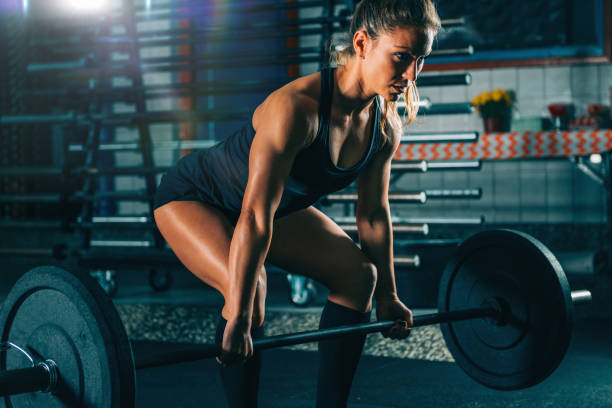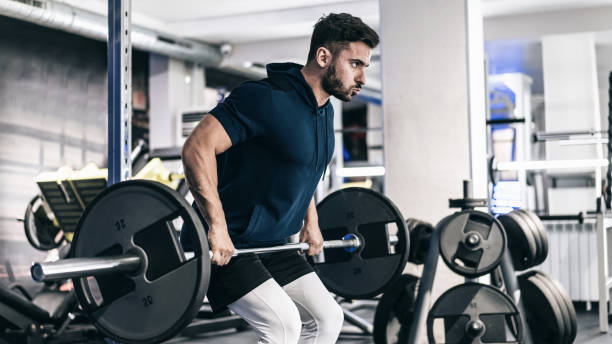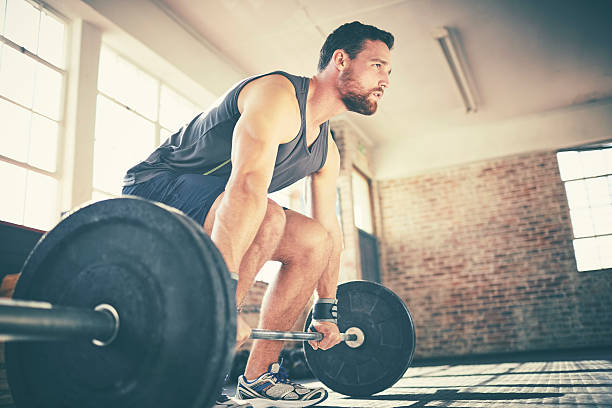The debate over whether to classify the deadlift as a back exercise or a leg exercise is one of the most well-known in the bodybuilding and powerlifting communities because the decision can have a significant impact on how it is done and where it belongs in a workout regimen.
For all intents and purposes, the deadlift is regarded as a leg exercise, specifically one that primarily targets the posterior chain portion of the legs, with the greatest recruitment of the glutes and hamstrings solidifying this classification as needed.
What is the Deadlift?
The deadlift is a closed kinetic chain compound exercise that typically uses a free-weight implement, like a barbell or set of dumbbells, in order to stimulate body-wide muscular activation at an unmatched level of intensity.
Due to how the exerciser moves the barbell from the ground, it is typically categorized as a pull-type movement. It is best known for involving numerous joints throughout each repetition, including the hips, knees, shoulders, and ankles, with subsequent variations changing the loading manner among these various joints.
As a member of the “big 3” group of lifts, the deadlift is considered to be indispensable for any serious strength training or powerlifting routine and is usually meant to be performed with low volume and high levels of resistance in order to provide the majority of the lower-mid back and posterior chain training stimulus of a training program.
Why Does the Deadlift Need to Be Classified as a Back Or Legs Exercise?
Exercises are typically categorized by the primary muscle groups they involve because it is these muscles that receive the most training stimulus during the exercise in question.
For the deadlift, this entails not only what kind of training stimulus the exerciser should anticipate from performing the deadlift, but also how to structure their training program around the deadlift, as performing posterior chain exercises the day after a deadlift session may result in decreased performance or overtraining.
Therefore, even though the deadlift is generally regarded as a leg exercise and is typically scheduled to be performed on heavy leg days in most training programs, it may also be added to back days as long as there isn’t a subsequent leg day or significant posterior chain exercises in the following day or two.
If the exerciser views the deadlift as a back or leg exercise, this may have an impact on how quickly they recover from injuries or how well they perform in competition. For example, pre-season periodization training programs for some sports may call for less emphasis on the posterior chain or back to help with recovery and preparation.
Deadlifting Muscle Groups Explained: Legs Vs Back
To use deadlifts effectively to train the desired muscles, it is important to first comprehend how the body moves during the deadlift.
The following joint actions occur in the deadlift:
• Knee Extension (straightening of the knees)
• Hip Extension (straightening or thrusting through the hips)
• Shoulder Extension (bringing the arms backward from the front)
The main movements in the deadlift are knee and hip extension; shoulder extension occurs only rarely.
Although the deadlift is primarily a leg or lower body exercise because of the knee and hip movements, we will discuss the muscles used, including the back muscles, and how they are used.

Quadriceps
When you deadlift, these muscles on the front of your thigh straighten your knee.
Particularly at the beginning of the movement, the quads are primarily used to drive the barbell off the ground. You probably have weak quads if you falter at the bottom of the deadlift.
Hamstrings
These back of the thigh muscles help to extend your hips, but they are not the main hip extensor.
In other words, they occasionally assist in extending the hips during the deadlift’s lock-out phase, but there are likely more effective exercises for hamstring training.
Gluteus Maximus
The primary glute muscle, or the one we sit on, is called the gluteus maximus. One of the body’s biggest muscles, it helps the hip extend during the deadlift.
They support you as you push through the top with your hips. You most likely have weak glutes if you can’t lock out the deadlift.
Spinal Erectors
The strip of back muscles that runs along the side of your spine from your neck to your tailbone is called the spinal erectors, or erector spinae.
These muscles contract isometrically, i.e. they contract but do not change muscle length during the deadlift.
They aid in keeping your spine in a neutral position. help prevent your back from rounding in the deadlift.
Latissimus Dorsi
The latissimus dorsi, also known as the lats, run from the side of your spine to the back of your upper arm.
When you deadlift, these muscles help keep your spine extended and bring your arms closer to your body, respectively.
For the sake of maintaining the ideal bar path, they help keep the barbell on your body and prevent upper back rounding.

Tips to Develop a Stronger Deadlift
Warm-up
You need to warm up before giving everything you’ve got. Being properly warmed up will improve performance while lowering the risk of injury.
Work on Your Technique
Regardless of the deadlift, you are performing, you must use the correct form. You should avoid using a poor, untrained technique because it causes weakness and injuries. However, if you practice, your deadlift will become much stronger and your risk of injury will be significantly reduced.
A few basic key tips on the conventional deadlift technique would be:
• At all times, the arms must be straight. Bending them is what leads to biceps tears
• A neutral position for the lower back is ideal. It can be very dangerous and result in unintended injuries round your back.
• The entire exercise should be performed with tight abs and lats. Your strength will increase as a result.
• At all times, the bar should remain close to your body. Your back will suffer a great deal, and you’ll be able to lift fewer pounds if you keep it at a distance.
Train Explosively
Explosive training is a very efficient way to build deadlift strength. Additionally, this style of weight training may be simpler and less taxing. You cannot undervalue the effectiveness and power of bodyweight exercises for developing athletic strength and power.
Conclusion
The deadlift is unmistakably a leg exercise on paper, in the majority of beginner and intermediate training plans, and in terms of muscle activation.
Despite the fact that it is technically also a back exercise, it need not be limited to this definition.
In the end, it is more up to the exerciser, their training objectives, and their training program, allowing the deadlift to be classified as a leg exercise, a back exercise, or even neither definition as long as proper workout programming is followed.
FAQ
Do Deadlifts Build Legs?
Because they require the hips and knees to extend, deadlifts do indeed build legs. Throughout the exercise, your quads, hamstrings, and glutes experience concentric and eccentric contractions, which means they shorten and lengthen. Your muscles are under a lot of pressure to grow as a result.
Are You Supposed to Feel Deadlifts in Your Back?
Even though your quads, glutes, and hamstrings do the majority of the work, it is not necessarily bad to experience some lower back soreness; however, it shouldn’t be the sorest muscle group. Your lats and traps might also feel a little sore, which is acceptable.
Should My Hamstrings Feel Sore After Deadlifts?
Deadlifts can cause hamstring soreness, which is a very common occurrence and has several causes.
